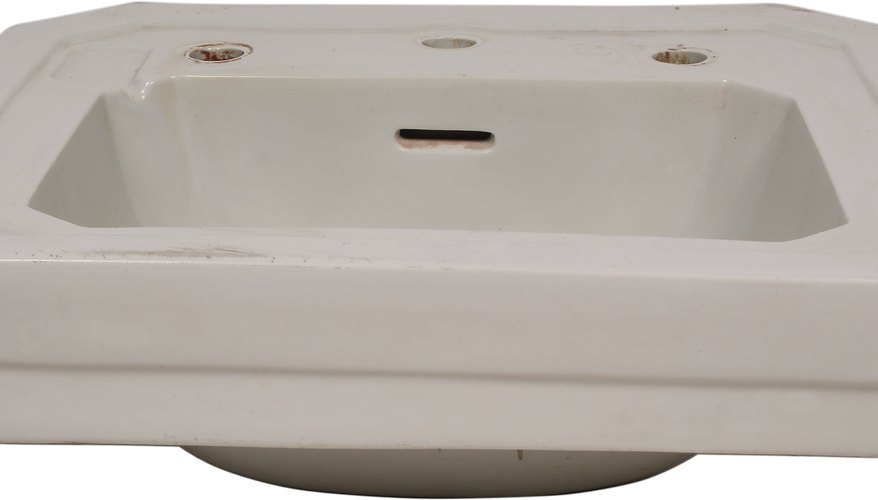The plug in your bathroom sink is probably one of those things that aren't on your mind until there is a problem, and then it is really on your mind. The mechanism that operates the plug in most bathroom sinks is a very simple device with very few moving parts. This normally makes the process of locating the problem a fairly simple task. Repairs can be slightly more challenging.
Crawl under the sink and use the torch to locate the plug mechanism. It will be a long, thin metal rod extending down from the centre of the tap. It should intersect with another metal rod much the same size, which travels horizontally into the drain pipe. Where the rods intersect there will be a metal clip or bracket which holds the two rods together. Check this intersection point to be certain both rods are in the bracket and the bracket is tight and secure. At times the bracket can become loose and will not allow the lever to operate correctly. If the rods are out of the bracket, put them back into place, tighten the bracket and test the plug activation lever.
- The plug in your bathroom sink is probably one of those things that aren't on your mind until there is a problem, and then it is really on your mind.
- If the rods are out of the bracket, put them back into place, tighten the bracket and test the plug activation lever.
Check the horizontal rod to see if it is bent or appears to be in a bind of any type. Occasionally the rods will become slightly misaligned, and when pressure is applied to open the plug the force can bend the rod, causing it to be in the wrong position to operate the correctly. If the rod appears bent, loosen the bracket and slide the horizontal rod out of the bracket. Using the pliers, grip the rod as close to the drain pipe as possible and hold it firmly in place. Very carefully use your free hand to bend the rod back straight. Normally the rod is small enough in diameter to allow you to bend it rather easily. Once the rod is straight, reconnect the horizontal rod, tighten the bracket and test the plug.
- Check the horizontal rod to see if it is bent or appears to be in a bind of any type.
- Occasionally the rods will become slightly misaligned, and when pressure is applied to open the plug the force can bend the rod, causing it to be in the wrong position to operate the correctly.
Remove the plug from the sink. With most models this is done by turning the plug slightly, then pulling it up. Check the plug for any obvious damage or defects. Especially check the lower portion, which is much smaller and easier to break or damage. If the plug is damaged, it will need to be replaced. Use the torch to check the drain. Look for any objects or debris which may have entered the drain and are blocking the plug mechanism. In bathroom sinks it is not uncommon to have a great deal of hair in the drains. This could cause a build-up on the mechanism and limit its ability to function properly. Clean any debris or blockage out of the sink and replace the plug.
- Remove the plug from the sink.
- Clean any debris or blockage out of the sink and replace the plug.
TIP
The bracket holding the two rods together is also called a clevis.
